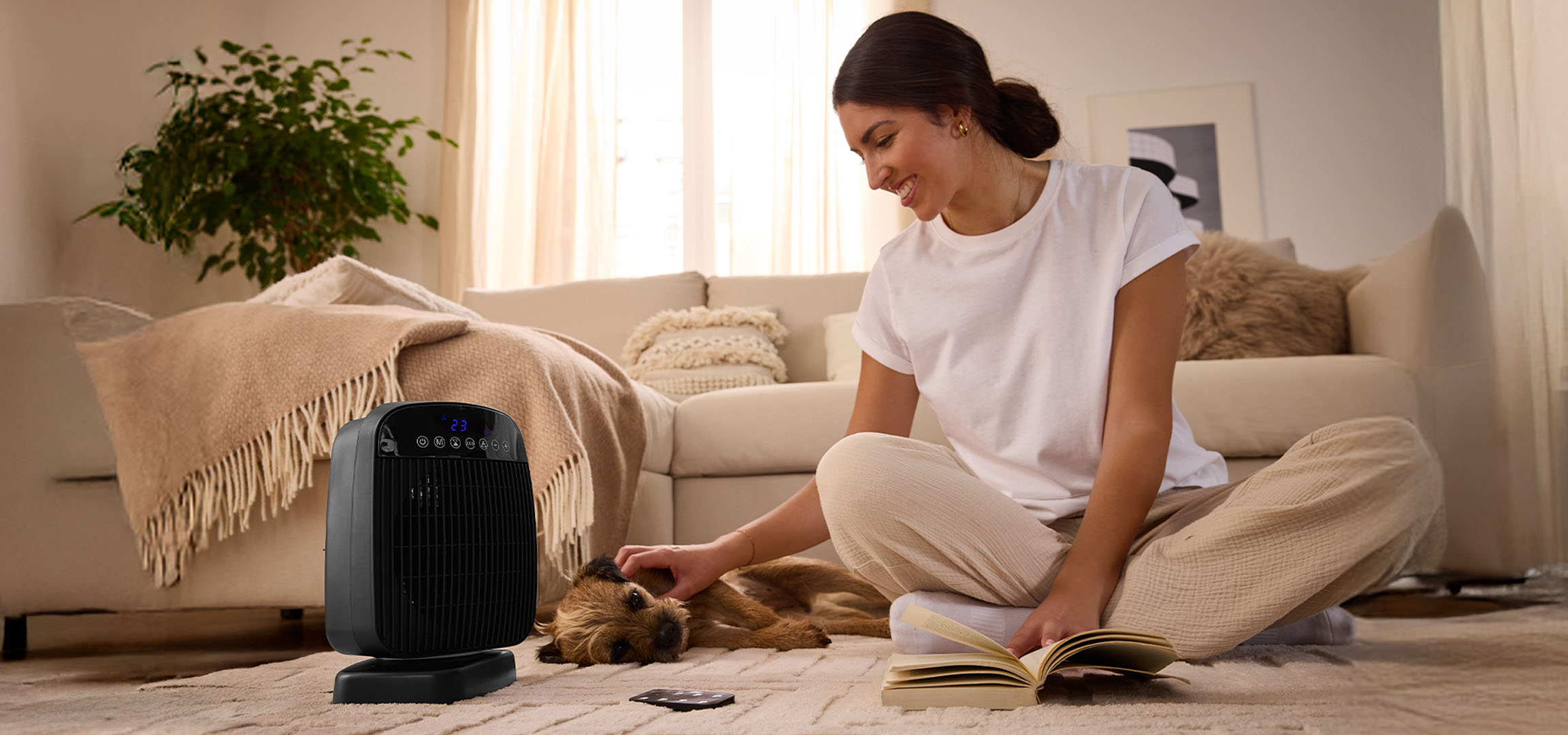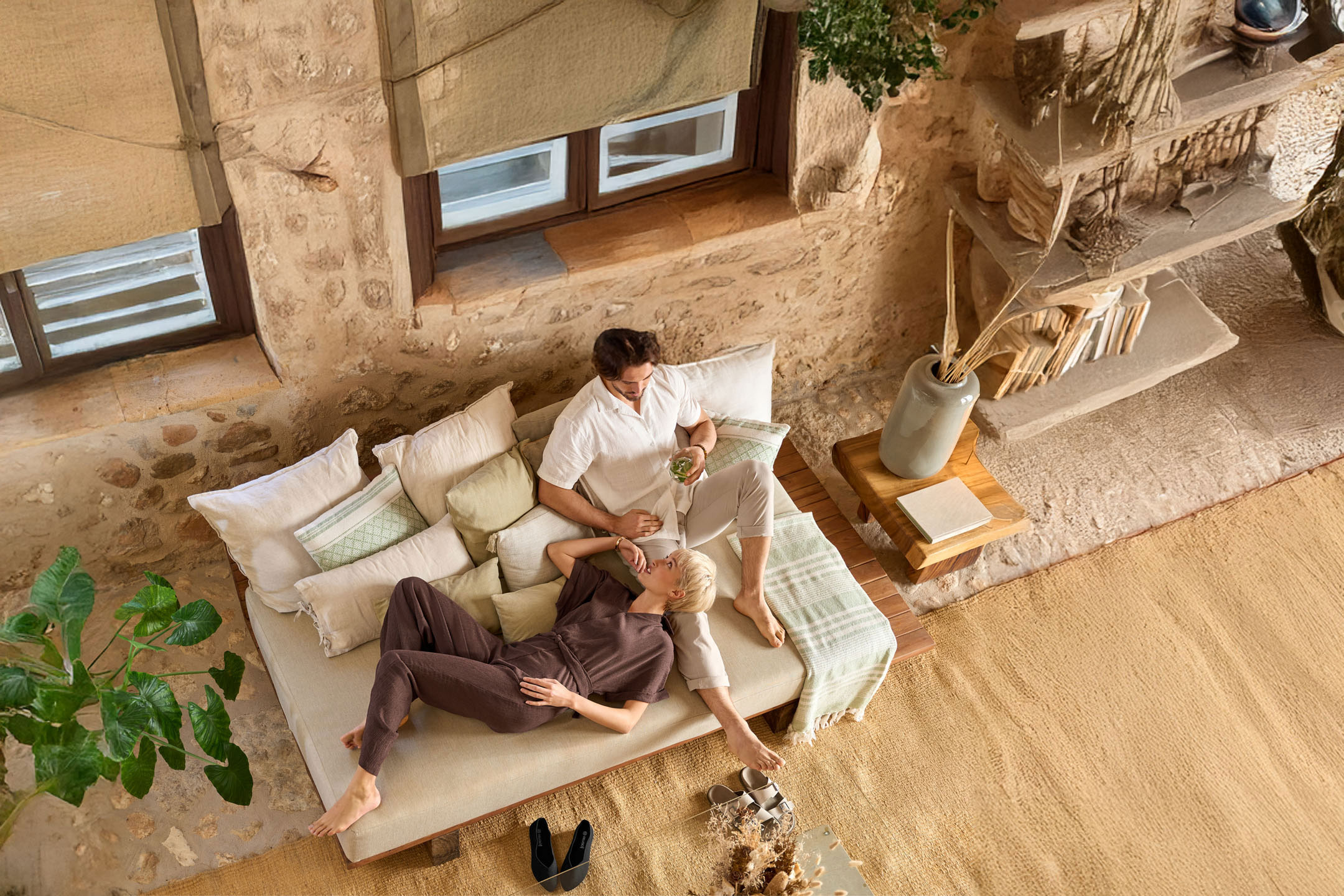Make yourself cosy: heat properly with heaters
Brr, pretty chilly? You can easily change that: (mobile) heaters provide lightning-fast warmth - especially where there is no classic heating. Infrared or convection, mini electric heater or fan heater? We do the heater check, reveal tips on the right heating and show you how to banish chills economically and efficiently.
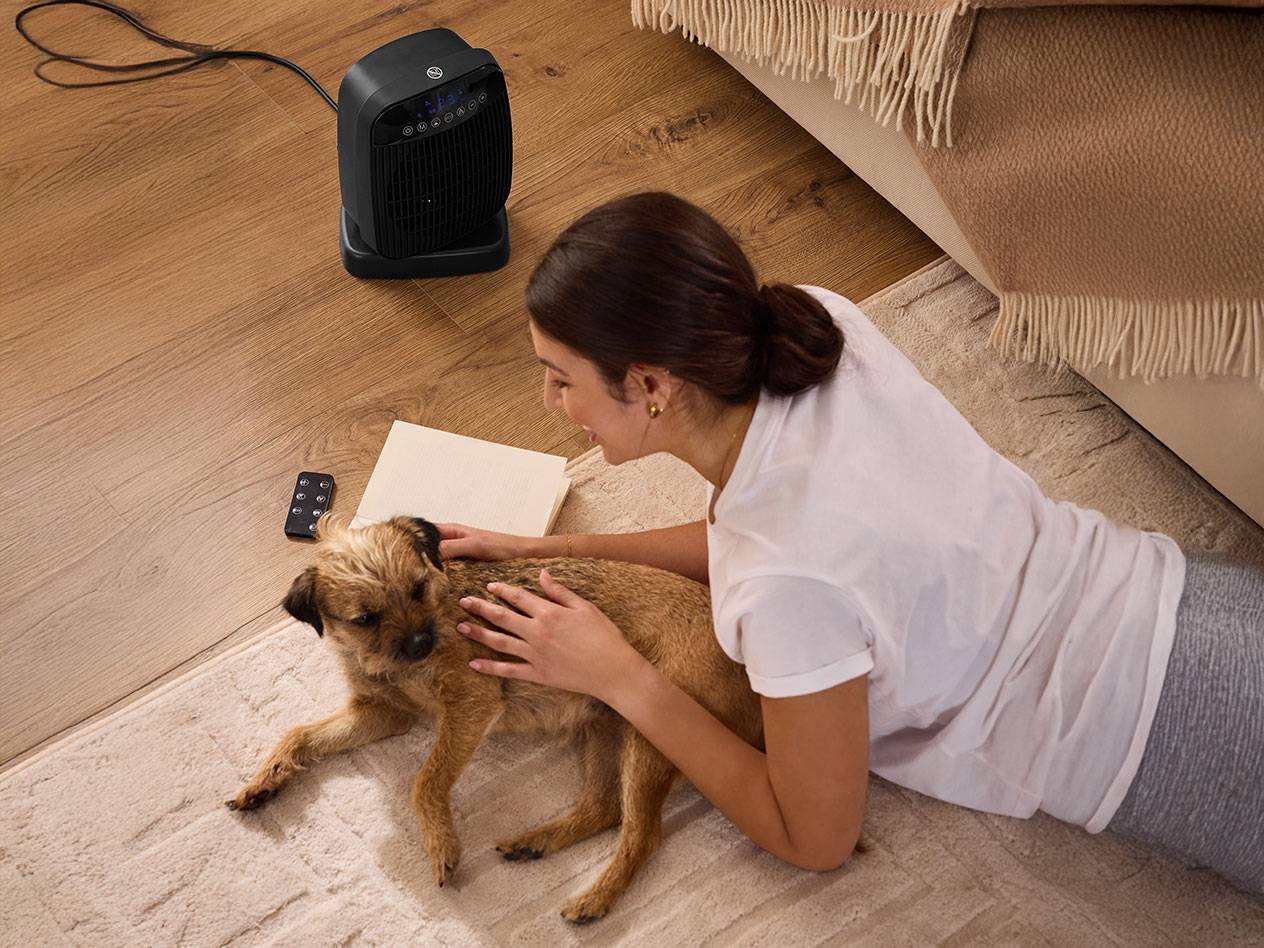
Heaters: Which model can do what?
Freezing is no fun. That's why heaters were invented. They generate heat energy that is intended to hit objects or people. This definition includes not only classic heaters for district heating, but also electric heaters, ovens and power tools such as hot air blowers, etc. In practice, the term heater mainly refers to easy-to-install electrical appliances with a power plug that make rooms without heating cosier or provide you with an additional source of heat if you need it. There are two main types:- Fan heaters and fan heaters are a mix of heat module and fan. They heat drawn-in air and distribute it around the room via the fan unit. This heating of the air molecules is called convection heat. Because the basic fan technology is built in anyway, you can usually use fan heaters for heating and cooling - Radiant heaters are infrared heaters that emit heat directly. They are available as compact wall-mounted radiant heaters or as large heating panels. Infrared heat heats the air less than the objects and people around it. This heat is perceived as more intense, and radiator thermostats also belong to the category of heating appliances. They are fitted to a classic radiator and ensure that you can heat properly and save a lot of money to boot. Their clever programmes switch the heat on at certain times, for example, or detect open windows.
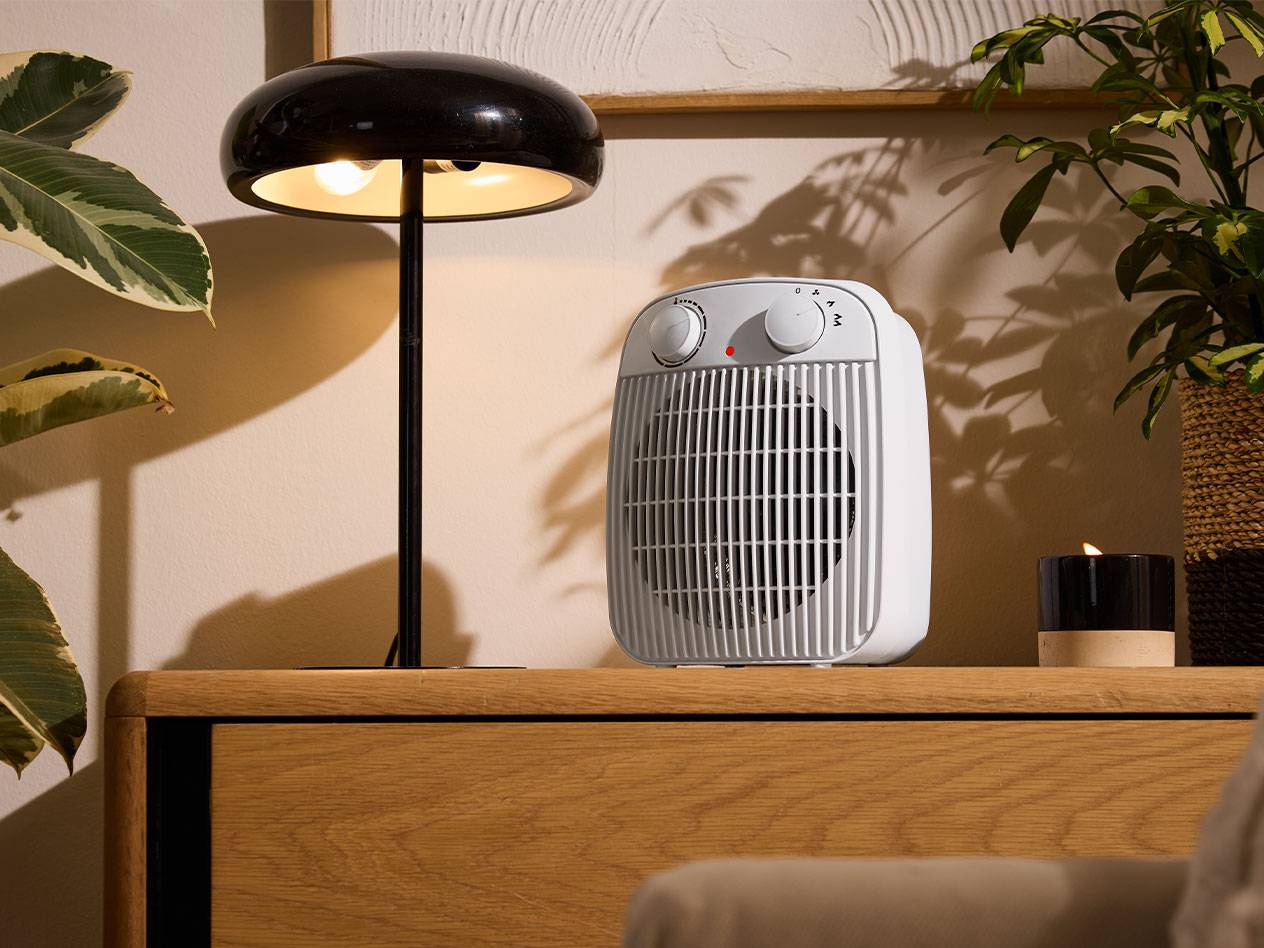
Fan heaters vs. radiant heaters: What are the pros and cons?
Fan heaters, radiant heaters and the like all have the same task. They are designed to warm rooms in which there is no classic radiator or fireplace or in which you are still shivering despite the heating and a warm blanket. The following applies to all mobile heaters: they generate targeted heat and are designed to heat up their immediate surroundings. They are neither as efficient nor as powerful as a classic wall heater for district heating. Similar to air conditioning units, they are at their best when:- you place the device close to your desk, bed or directly on the workbench,- you keep windows and doors closed during operation and remove unnecessary barriers,- you only use the device for as long as you need it for your heat sensation.But which type of mobile heat generation suits you better? Here is an overview of the advantages and disadvantages:
Konvektionswärme mit Heizlüftern | Infrarotwärme mit Wärmestrahlern |
|---|---|
+ Schnelles Heizen | + Direkte und angenehme Wärme |
+ Günstig und kompakt | + Wärme bleibt länger erhalten |
+ Flexibel & mobil einsetzbar | + Lautloser Betrieb |
- Wärme geht über Raumluft schneller verloren | - Nur zum punktuellen Heizen |
- Höherer Stromverbrauch | - Höherer Stromverbrauch |
- Hörbares Gebläse | - Preisintensiver als Heizlüfter |
Generally speaking: fan heaters are a good choice for the workshop, your living space or even the garden shed, as you can simply take them with you and set them up anywhere. Radiant heaters have proven their worth in typical cold rooms such as hallways, guest toilets or garages.
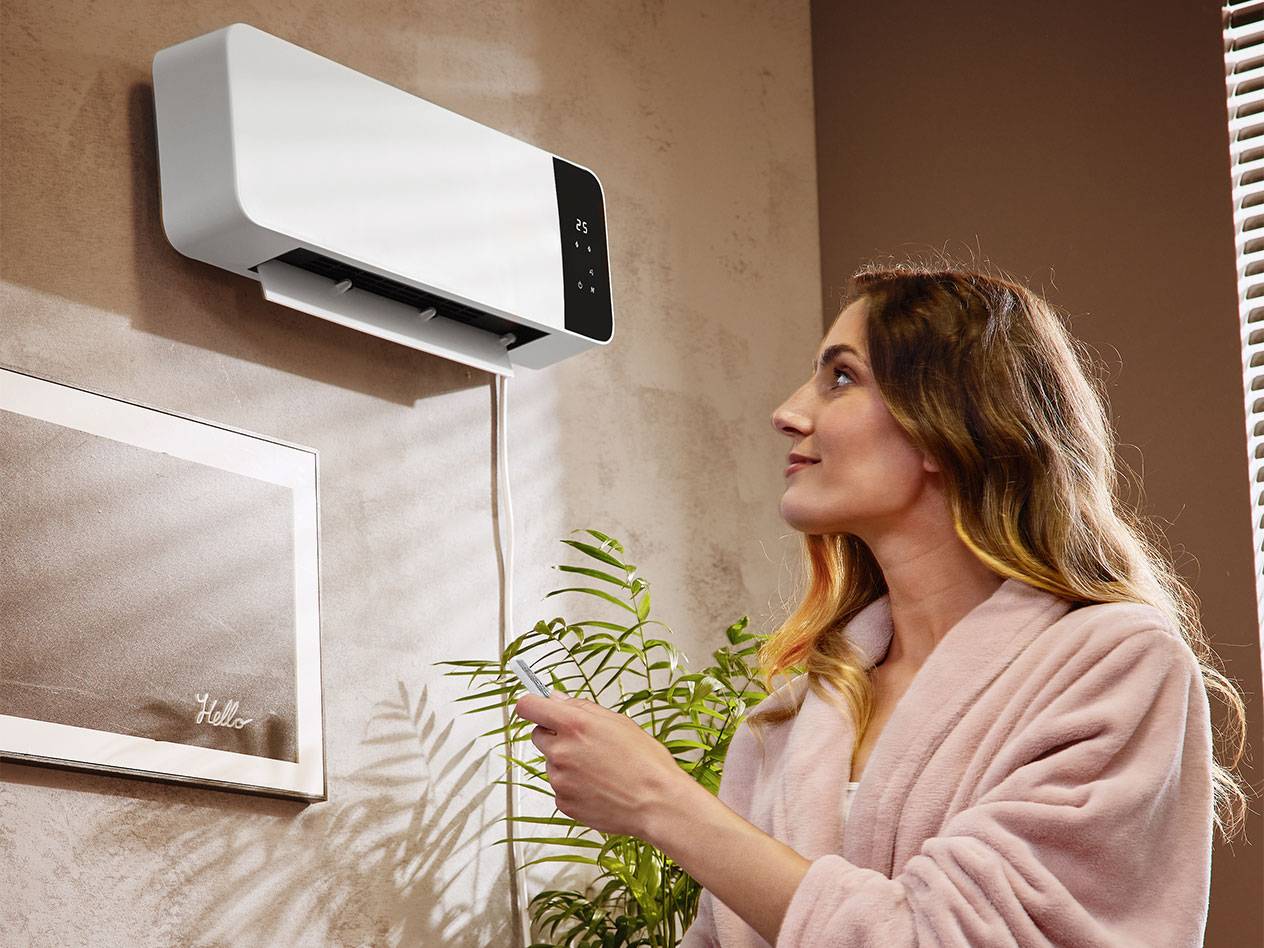
Heating correctly: What do I look out for when buying heating appliances? When it comes to heating, you should pay particular attention to safety when buying appliances. Heat production ensures that the appliance itself gets hot. That's why every sensible product must have the following safety features:
Automatic switch-off: When the heater reaches a certain temperature, it switches off automatically. Operation is also stopped after a certain period of time. Further switch-off safety devices - for example, to prevent tipping - are even better.
Covers: A protective grille in front of the heat source is essential to protect you and your family from injury. However, risks can still occur. That's why you should always place or install heaters out of reach of children.
Protection class: The IP code indicates the rooms and environments in which a heater may be used. This code indicates the protection against dust and water. If a fan heater has the code IP20, it is protected against dust and larger dry particles, but not against water. It may therefore only be used in the living room, workshop or bedroom, for example. If the device has the IPX4 code, it is only protected against splash water and may be used in bathrooms that are too cold or in clean rooms, subject to certain safety precautions.In addition to safety, (mobile) heating is of course also about efficiency. Fan heaters should have at least 2,000 watts of power so that the heating element does its job quickly and produces enough heat to keep you cosy.
You can use the heating levels to decide whether you need a lot of heat in a short time or just want to treat yourself to a little more cosy comfort in eco mode, and since you want to warm up yourself and not just the room, it should be possible to control the heat flow. With fan heaters, this can be done using adjustable slats, with radiant heaters usually using an adjustable angle of inclination.
